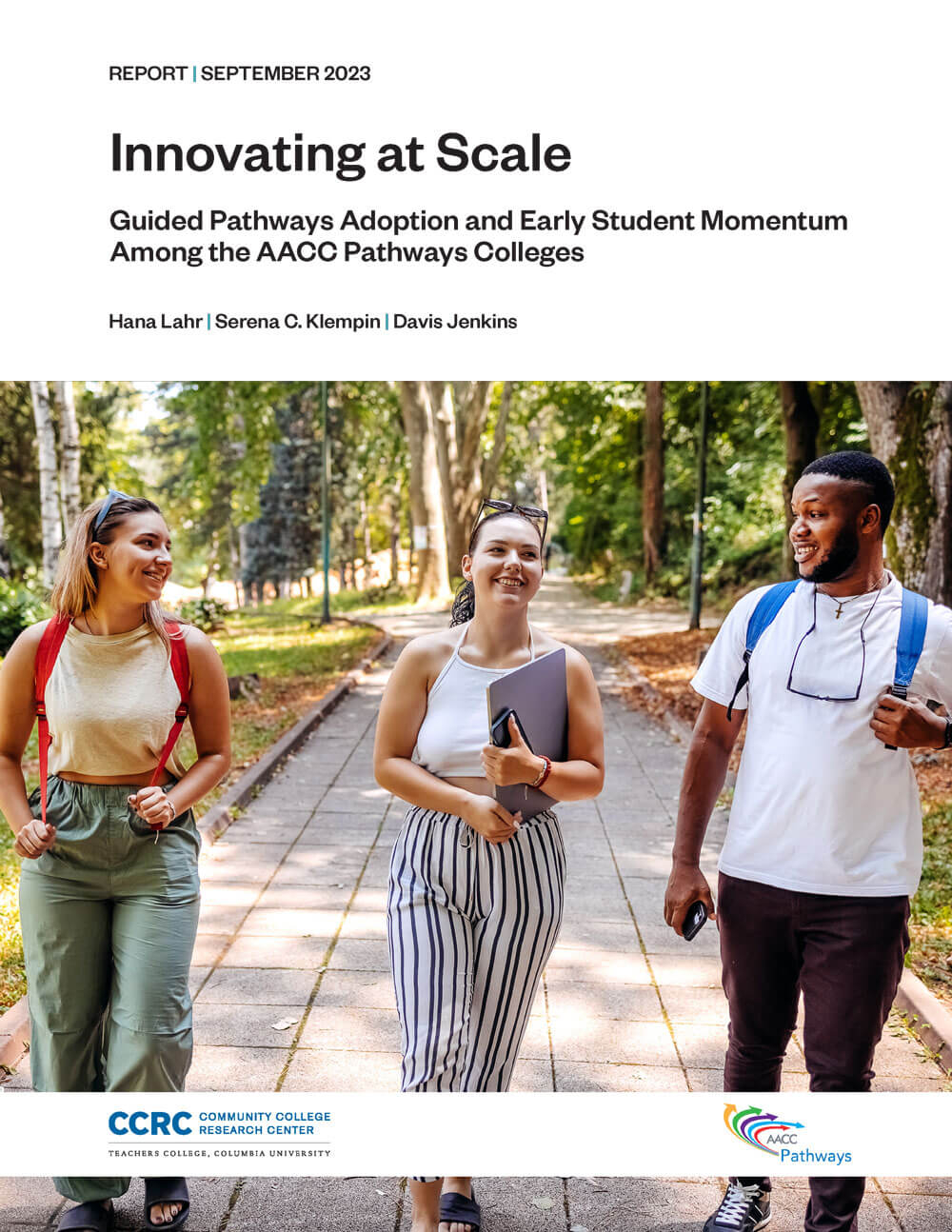
In 2015, the American Association of Community Colleges (AACC) announced the AACC Pathways Project, a national initiative designed to support a cohort of community colleges to implement and scale whole-college guided pathways reforms. Thirty community colleges from 17 states were selected for the project and embraced the challenge of redesigning the student experience at scale. Over the course of the project, which ended in spring 2022, the participating colleges focused on implementing and scaling practices within the four practice areas of the guided pathways framework: (1) mapping pathways to students’ end goals, (2) helping students choose and enter a program, (3) keeping students on a path, and (4) ensuring that students are learning.
This report discusses what these colleges have accomplished in their reforms, how they adapted to the challenges of the COVID-19 pandemic, and what they have learned about institutional transformation over the past seven years. It draws on interviews conducted in spring 2022 with guided pathways leaders at the colleges. It also draws on and presents college-reported data from the Guided Pathways Scale of Adoption Assessment (SOAA) and trend data on students’ early momentum at each college through the 2020-21 academic year.
Examples of accomplishments include embedding short-term credentials in program pathways and strengthening transfer paths (practice area 1), grounding orientation and advising in meta-majors and implementing multiple measures assessment and guided self-placement (practice area 2), practicing case management advisement by meta-major and instituting plan-based and other forms of predictable course scheduling (practice area 3), and adopting equity-driven professional development programs and experiential learning initiatives (practice area 4).
The experiences of these colleges are useful in understanding how change happens within community colleges, what is possible, what helps and what hinders reform at scale, and how colleges continue to innovate in the face of unprecedented challenges. The colleges have adopted many guided pathways practices at scale and are continuing to scale additional reforms focused on onboarding, advising, and teaching and learning within programs. Colleges that are further along in adopting an integrated set of guided pathways practices at scale have experienced greater increases in student early momentum metrics than colleges that are less further along. The next frontier for many of the AACC Pathways colleges includes scaling experiential learning in programs in workforce and transfer programs, creating stronger pathways between adult basic education programs and dual enrollment and college programs of study, and ensuring that onboarding activities are helping students explore and choose a program aligned with their interests and aspirations.
A companion brief describes advice from project leaders at the AACC Pathways colleges on how to facilitate engagement in implementing whole-college reforms and how to sustain the work over several years.
